Jackie and I spent the morning at Busey Woods, clearing bush honeysuckle.
As you can see, Jackie is very pleased with her saw.

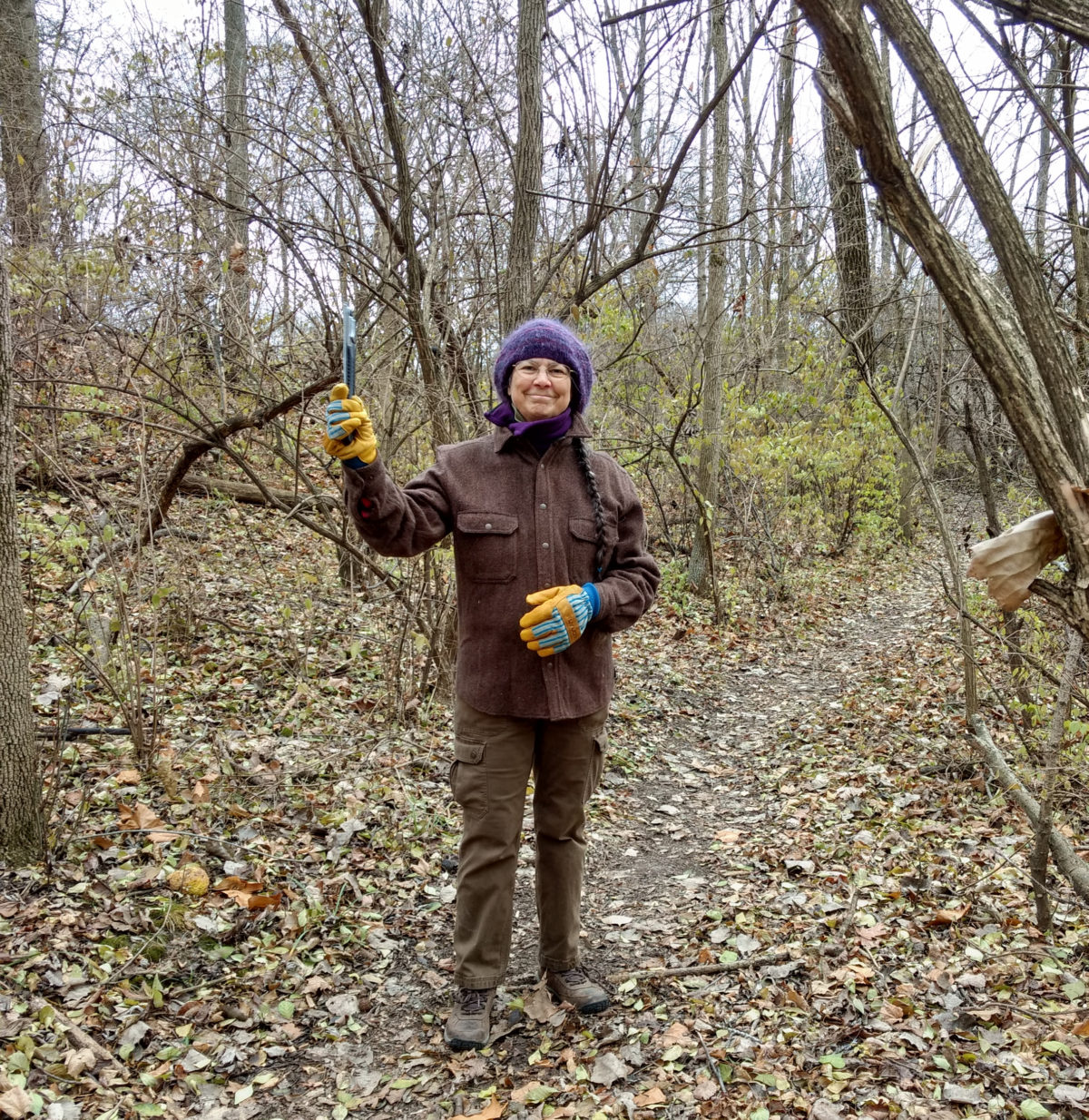
Jackie and I spent the morning at Busey Woods, clearing bush honeysuckle.
As you can see, Jackie is very pleased with her saw.
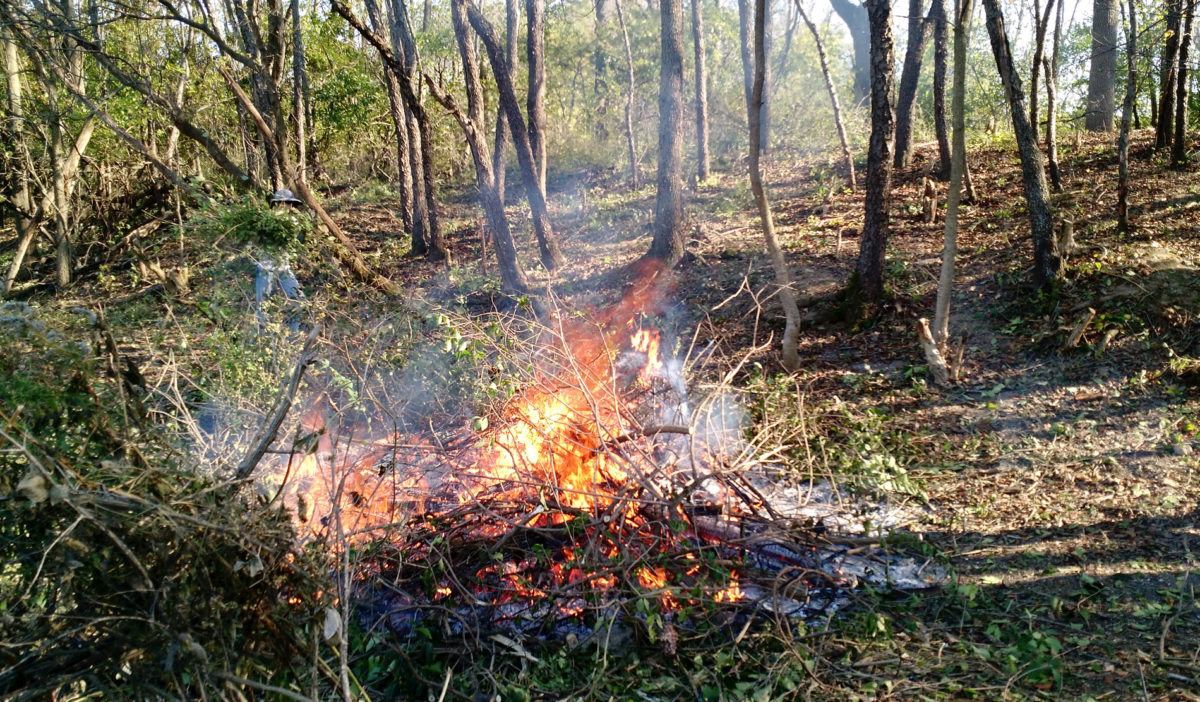
Last Thursday Jackie and I (along with several other Urbana Parks Department volunteers) spent a couple of hours clearing invasive bush honeysuckle at the Perkins Road natural area. (The photo is from a year ago. Sadly, we did not have a fire this time. We just piled the honeysuckle up in great huge brush piles.)
Like last time the work consisted of cutting and then carrying or dragging honeysuckle trunks and branches across a forest floor made rough by many tangled roots and littered with small stumps where honeysuckle had been cleared in past.
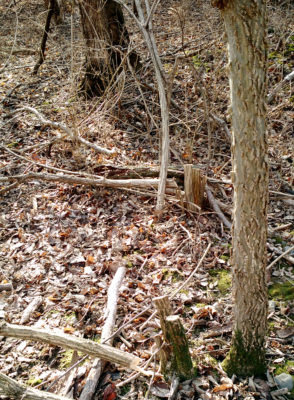 The next day Jackie commented that her feet were tired, and suggested that the stewardship work was more to the point than the various foot exercises suggested by movement teachers such as Katy Bowman and our new local Restorative Exercise Specialist Ashley Price. (Exercises such as rolling your foot on a ball or standing in boot trays filled with river rocks.)
The next day Jackie commented that her feet were tired, and suggested that the stewardship work was more to the point than the various foot exercises suggested by movement teachers such as Katy Bowman and our new local Restorative Exercise Specialist Ashley Price. (Exercises such as rolling your foot on a ball or standing in boot trays filled with river rocks.)
To which I said, “Yes! Exactly!”
Movement trumps exercise.
That’s not to say that exercises don’t have their place. Especially for people whose lifetime movement history has left them unready to safely perform certain movements, but also just for people whose schedule makes it hard to fit in as much movement as they’d like, exercises can be an excellent way to make yourself ready or keep yourself ready.
But to actually use your whole body capabilities to perform real work? To engage in bending, squatting, dragging, lifting, carrying—and do so while in nature, as part of a community effort, making the land better? So much better.
<whispering in Katy Bowman voice>Hashtag #VitaminN Hashtag #VitaminCommunity Hashtag #VitaminTexture</whispering> (This last will make no sense if you don’t listen to the Katy Says podcast.)
Nothing like walking through tall prairie grass to clean up a pair of muddy boots.
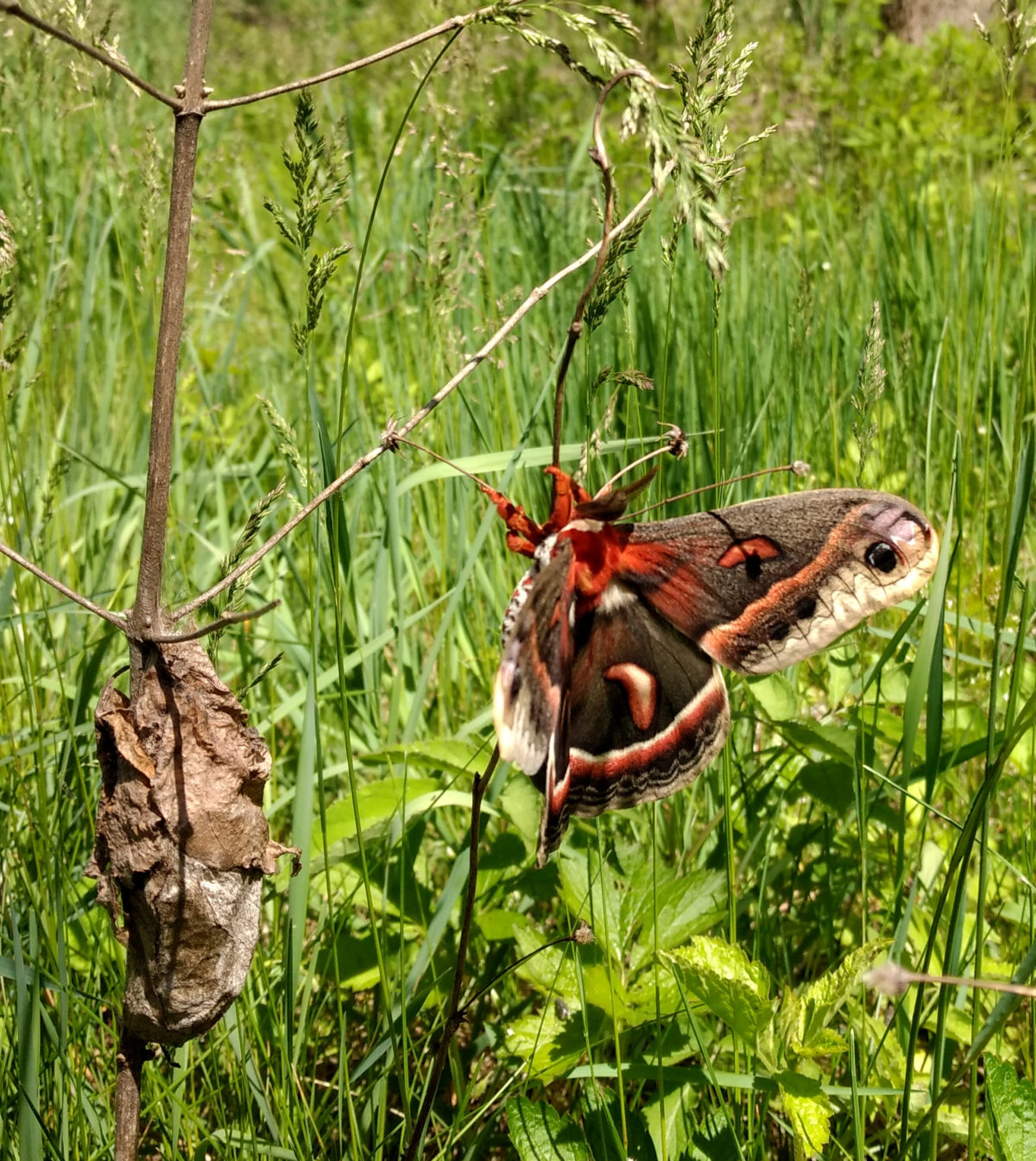
I’ve been occasionally joining Jackie when she does stewardship workdays at natural areas around the county as part of her Master Naturalist work. They’re fun, and they fit in very well with my shift away from exercise and toward movement. Our work Sunday, clearing garlic mustard from the South Arboretum Woods, is a great example.
(Garlic mustard is a nasty invasive, largely because the first-year growth leafs out very early, and covers the ground almost completely. Native plants emerge a little later in the spring, by which time they can’t get enough light to get going. The upshot is that the understory loses most of its natural diversity, becoming just a vast carpet of garlic mustard.)
What we did Sunday was make our way through the woods, spotting and then pulling up all the second-year garlic mustard. (It’s a biennial. The first year is the low ground cover. The second year it puts up a flowering stalk and produces seeds. If you can get the flowering stalks before they set seed, you can make a dent in the local garlic mustard density.)
What struck me was how similar our activity was to “gathering” à la hunting and gathering. It was physically similar—walking through the woods, and then squatting, bending, reaching, and pulling. It was also mentally similar—doing exactly the same pattern-matching that someone seeking to gather edible or medicinal plants would do.
I suspect that both of these aspects of this activity enhance the well-known beneficial effects of “forest bathing” (aka spending time in the woods).
The area we were clearing has a lot of downed branches, big and small, some partially or completely hidden by the ground cover, making for a complex walking surface—more good stuff for both the body and the brain.
Of course, volunteering for and participating in a stewardship work day produces all sorts of additional benefits—in particular, doing something good for the local communities (both the human community that uses the space and the natural community that inhabits it) is rewarding, as is making social connections with the other volunteers and engaging together on a common effort.
Every time I do one, I am reinforced in my desire to do more stewardship workdays, despite my slothful nature.
(The picture at the top is another view of the Cecropia moth that Jackie spotted while we were there.)
On a stewardship work day clearing garlic mustard at the arboretum, Jackie spotted this guy just out of its chrysalis—a Cecropia moth still trying to get its wings pumped up enough to fly:
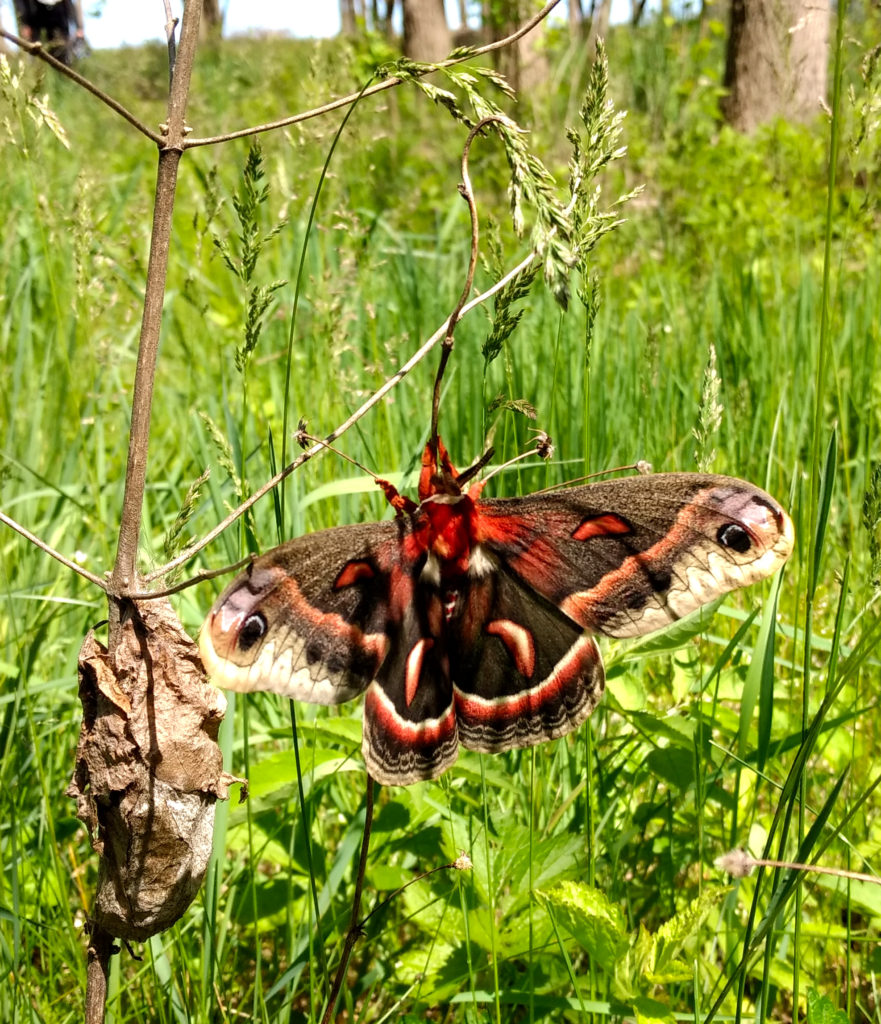
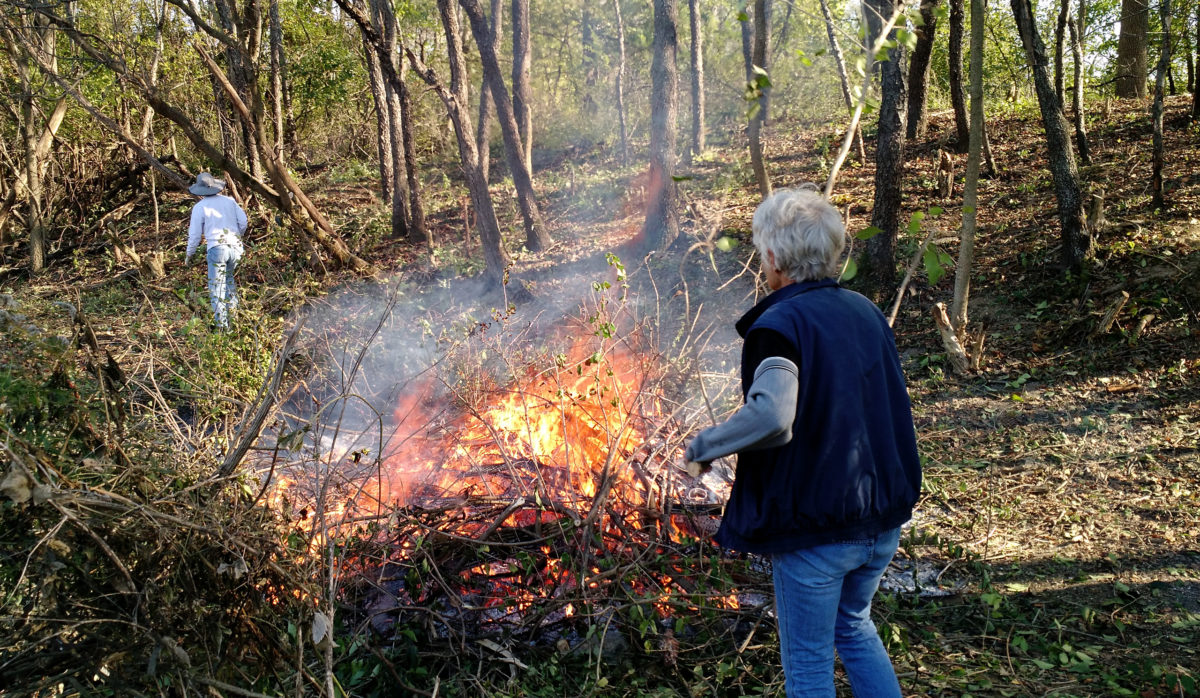
Jackie and I spent a few hours at the Urbana Park District’s Perkins Road Site, some land just behind the Urbana Dog Park that used to belong to the Sanitary District and was used for sludge ponds. The area is being restored as wet prairie.
Jackie and I joined a crew of about a dozen people cutting invasive bush honeysuckle and burning it.
I went to one or two stewardship workdays with my dad in Kalamazoo at preserves belonging to the Southwest Michigan Land Conservancy, but (probably just because of the details of what needed doing at those sites those days) didn’t come away with enough of a sense of accomplishment to prompt me to find similar opportunities here.
Since Jackie got involved with the Master Naturalists she’s been doing a lot of these, and I’ve joined her on several. We cut bush honeysuckle at Meadowbrook Park, and on another day gathered prairie seeds there. We pulled winter creeper at Weaver Park. And yesterday we were back to clearing bush honeysuckle—with the bonus that, because this site makes it difficult to haul things out, this time we got to burn it as well.
There’s an atavistic satisfaction that comes from playing with fire. Highly recommended. Don’t burn yourself.
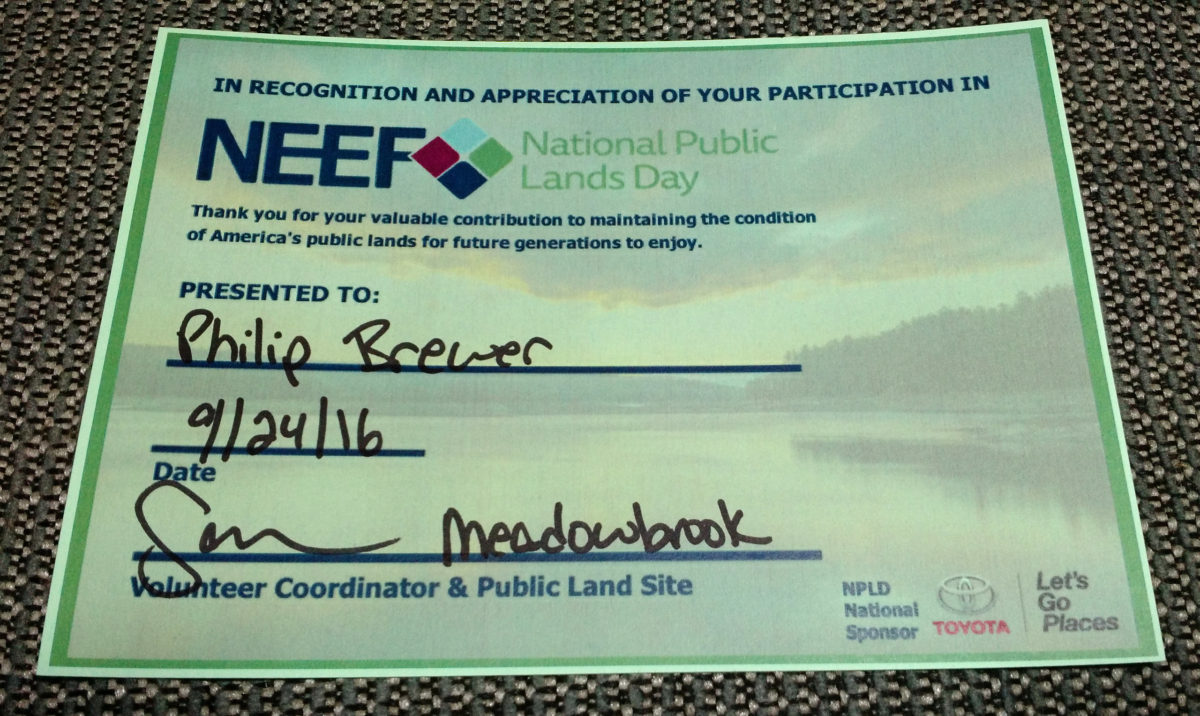
As part of becoming a master naturalist, Jackie has been going on volunteer work days at local natural areas. A couple of times I’ve gone along as well, most recently on Saturday to Meadowbrook Park where we gathered prairie seeds.
Jackie is trying to learn to identify all the plants during all the seasons, so she made a point of gathering some of each of the prairie species that the organizers wanted.
I figured I’d just try and be productive, so I focused on a plant I knew I’d be able to identify, and just gathered baptisia aka wild indigo aka false indigo. Over the course of 90 minutes or so I manged to fill a big paper grocery bag about three-quarters full of seed pods. Apparently the crop is better this year than last year, when weevils consumed nearly every seed. (Although I did see a lot of weevils—kind of disturbing because their size and shape makes it easy to mistake them for ticks.)
It was pretty easy. I spotted a baptisia from the sidewalk and gathered its seeds (leaving about half behind, so that there will be some seeds to disperse naturally). Then I looked around, spotted another plant a few yards away, and moved to that one. They’re not very dense in the prairie, but I don’t think I ever harvested a plant without being able to spot at least one more to move to, and then another visible from that one.
The baptisia flowering stalks seemed to be a favorite of some medium-sized black wasp. I skipped those stalks. They are also a favorite of a large green and brown praying mantis, which blends in surprisingly well for such a large insect. I saw three of them, barely noticing two before I started harvesting, and not noticing the third until it scrambled off the stalk.
(That’s the same kind of mantis, although not taken in the prairie.)
These seeds are going to be used right in Meadowbrook Park. Over the winter, the mowed area in the southwest corner of the park will be turned into more prairie.
The workday shifts are nominally 2 hours, but they don’t work us very hard. Especially when we’re all off working in different locations, they start to try to get us rounded up again after just 90 minutes or so. (I think especially when it’s hot they keep the shifts short.)
This particular work day was in celebration of National Public Lands Day, and while the workers refreshed ourselves with water, lemonade, and snacks back at the starting point, one of the organizers read an excerpt from a proclamation by Barack Obama in recognition of the day.
Then they gave anyone who wanted one a certificate recognizing our participation, and let us go.